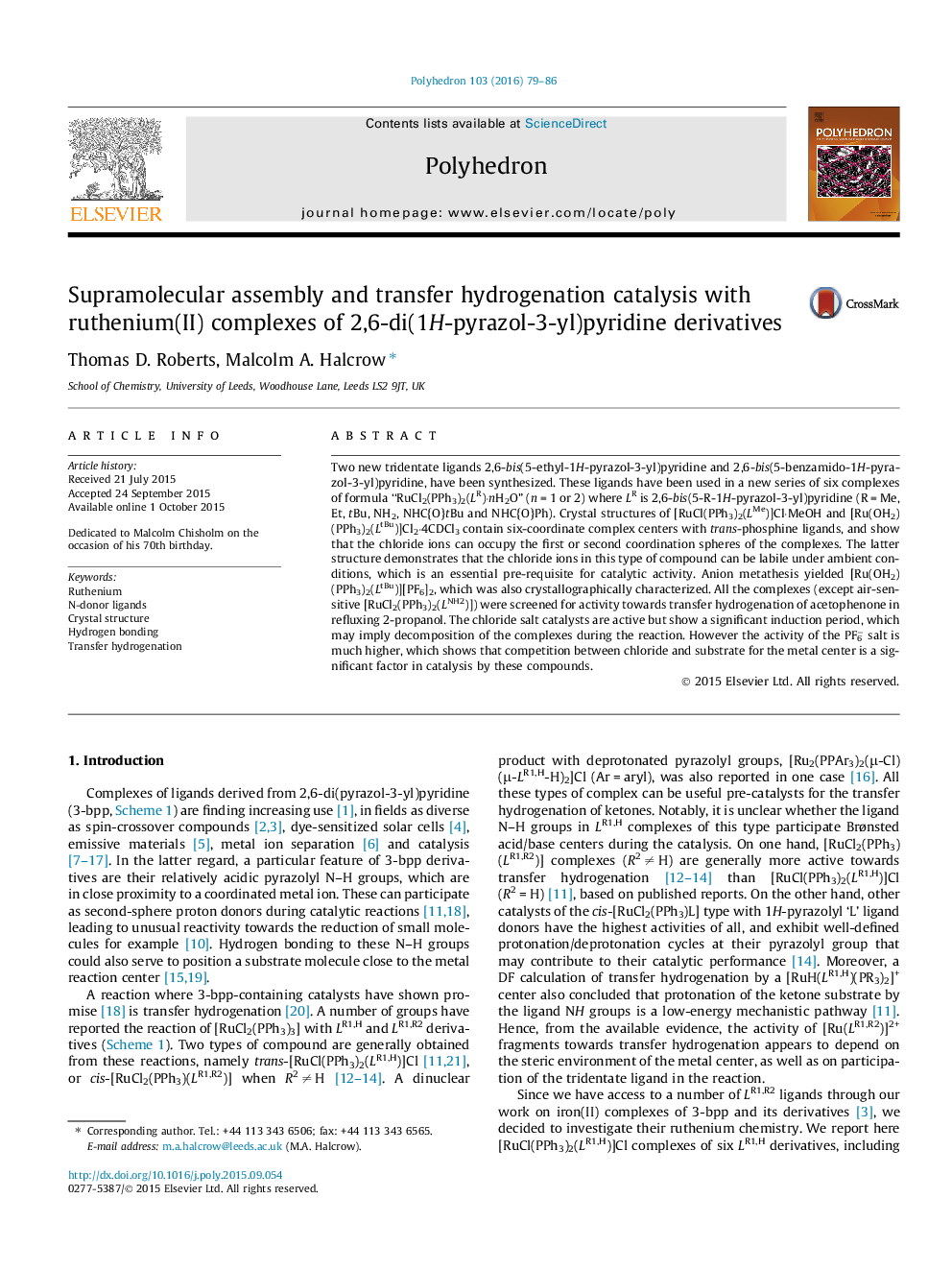| کد مقاله | کد نشریه | سال انتشار | مقاله انگلیسی | نسخه تمام متن |
|---|---|---|---|---|
| 1335842 | 979556 | 2016 | 8 صفحه PDF | دانلود رایگان |

Two new tridentate ligands 2,6-bis(5-ethyl-1H-pyrazol-3-yl)pyridine and 2,6-bis(5-benzamido-1H-pyrazol-3-yl)pyridine, have been synthesized. These ligands have been used in a new series of six complexes of formula “RuCl2(PPh3)2(LR)·nH2O” (n = 1 or 2) where LR is 2,6-bis(5-R-1H-pyrazol-3-yl)pyridine (R = Me, Et, tBu, NH2, NHC{O}tBu and NHC{O}Ph). Crystal structures of [RuCl(PPh3)2(LMe)]Cl·MeOH and [Ru(OH2)(PPh3)2(LtBu)]Cl2·4CDCl3 contain six-coordinate complex centers with trans-phosphine ligands, and show that the chloride ions can occupy the first or second coordination spheres of the complexes. The latter structure demonstrates that the chloride ions in this type of compound can be labile under ambient conditions, which is an essential pre-requisite for catalytic activity. Anion metathesis yielded [Ru(OH2)(PPh3)2(LtBu)][PF6]2, which was also crystallographically characterized. All the complexes (except air-sensitive [RuCl2(PPh3)2(LNH2)]) were screened for activity towards transfer hydrogenation of acetophenone in refluxing 2-propanol. The chloride salt catalysts are active but show a significant induction period, which may imply decomposition of the complexes during the reaction. However the activity of the PF6− salt is much higher, which shows that competition between chloride and substrate for the metal center is a significant factor in catalysis by these compounds.
Six new complexes of type “[RuCl(PPh3)2(LR)]Cl” have been prepared, where LR is a disubstituted 2,6-di(1H-pyrazol-3-yl)pyridine derivative. Crystal structures have shown that the chloride ligand in these compounds can be labile under ambient conditions, which is a requirement for catalysis. One complex salt [Ru(OH2)(PPh3)2(LR)][PF6]2 (R = tBu) was also obtained. All the complexes tested are moderately active towards transfer hydrogenation of acetophenone, with the PF6− salt having a much higher activity than the chloride salts.Figure optionsDownload as PowerPoint slide
Journal: Polyhedron - Volume 103, Part A, 8 January 2016, Pages 79–86